House Finch VS Purple Finch: 10 Major Differences You Need To Know
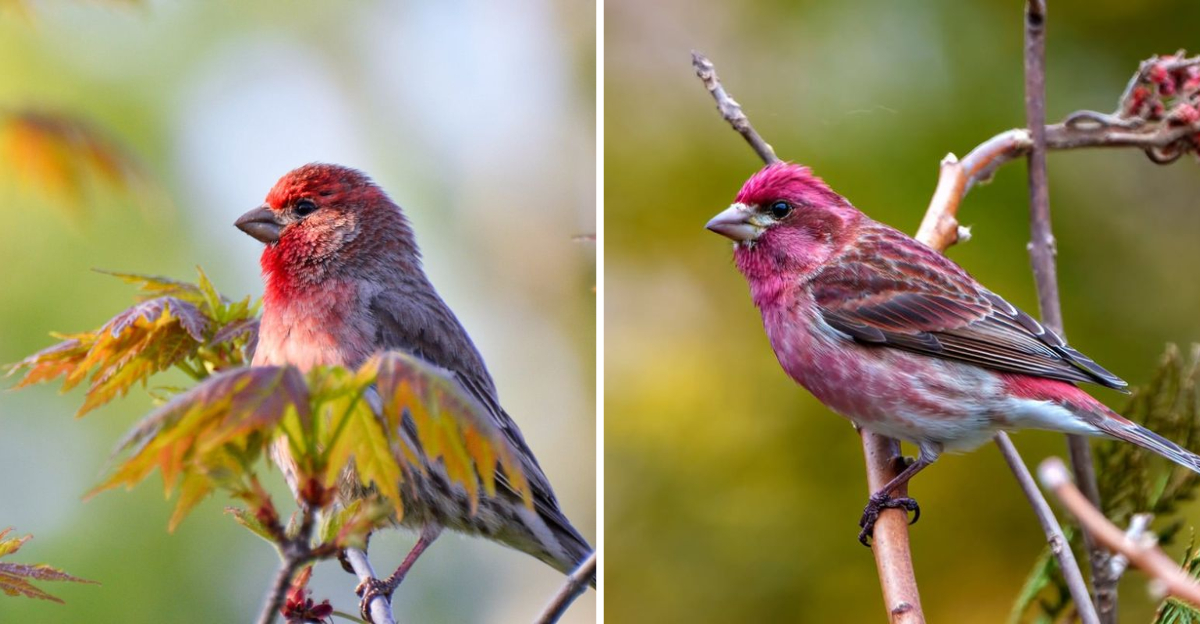
When it comes to finches, the House Finch and Purple Finch often leave bird enthusiasts perched on the edge of curiosity. While at first glance they might appear similar, a closer look reveals a vibrant tapestry of differences that make each species unique.
In this list, we’ll explore ten intriguing distinctions that set these feathered friends apart, diving into their appearances, behaviors, and habitats. Whether you’re a seasoned birdwatcher or just someone who enjoys the occasional chirp, these insights will surely add a splash of color to your birding adventures.
1. Color Patterns
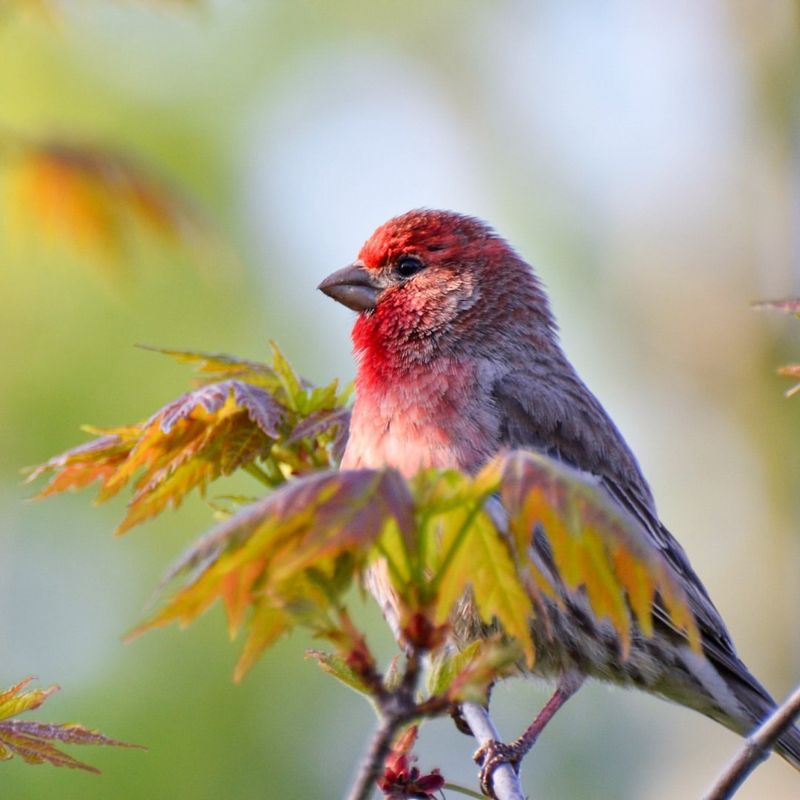
In the world of finches, color is the brush that paints their identity. The male House Finch dons a splash of red on its head, throat, and chest, giving it a vibrant yet somewhat muted appearance. This red can vary in intensity, ranging from orange to yellow, influenced by their diet.
On the other hand, the male Purple Finch is often described as wearing a raspberry-red suit, with the color covering much of its body, creating a more uniform and striking look. Female House Finches, in contrast, are more subdued, sporting brown-streaked plumage that provides excellent camouflage.
Female Purple Finches, while also brown-streaked, have a more pronounced facial pattern with a white eye stripe that adds a touch of elegance. Observing these finches side by side can be like watching a living canvas, where each bird contributes a unique stroke to the natural masterpiece.
Their colors not only serve as identifiers but also play roles in attracting mates and communicating with rivals. So, the next time you’re out birdwatching, keep an eye out for these subtle nuances in color that tell the story of each finch’s life.
2. Geographic Range
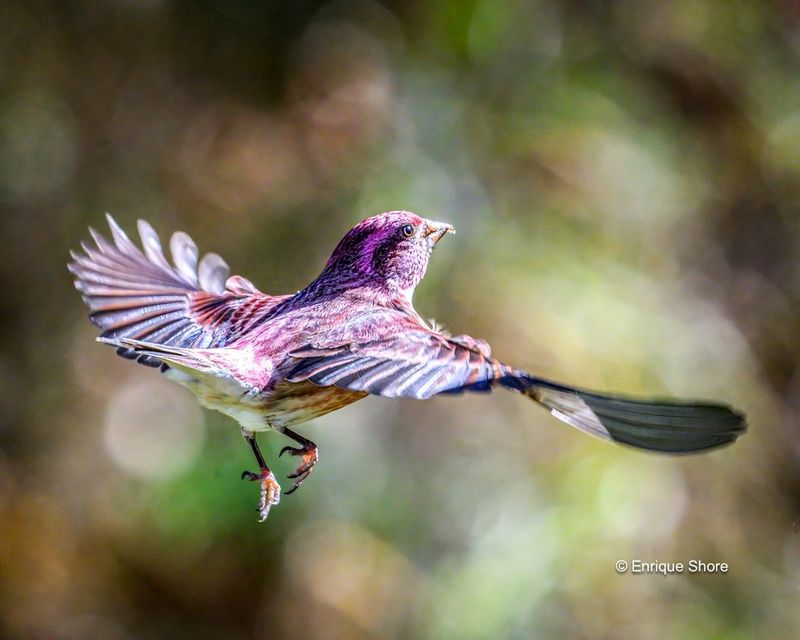
These finches may look similar, but their addresses tell a different story. House Finches are quite the city dwellers, having expanded their range significantly across North America. Originally native to the southwestern United States and Mexico, they’ve adapted well to urban and suburban environments, making them a common sight at backyard feeders.
Meanwhile, Purple Finches prefer the quiet life, sticking to the northern coniferous forests during breeding season. They migrate to the eastern United States in winter, where they prefer rural areas and wooded habitats.
The overlap of their ranges can sometimes lead to confusion, but knowing where to look can be a birdwatcher’s best tool. If you’re in a bustling city or suburb, chances are you’re seeing a House Finch. But if you’re wandering through serene forests or enjoying a rural escape, keep your eyes peeled for the Purple Finch.
Their geographic preferences highlight not just their adaptability but also their unique ecological niches, making each sighting a testament to their diverse lifestyles. So next time you spot a finch, consider not just its color, but its habitat as a clue to its identity.
3. Beak Shape
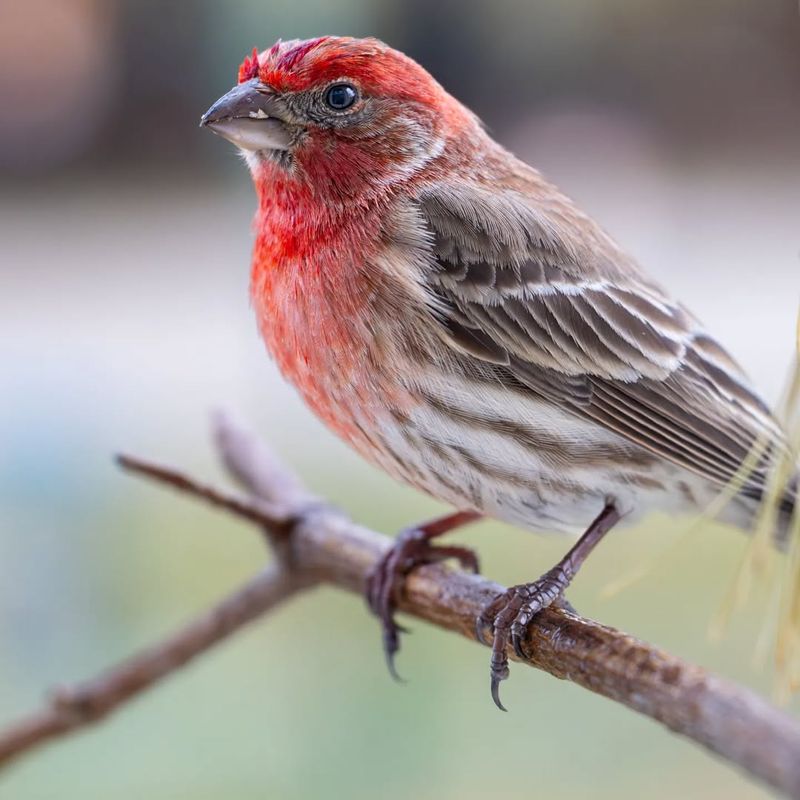
Beaks are more than just avian accessories; they’re finely-tuned tools that reveal much about a bird’s lifestyle. The House Finch possesses a relatively short and stubby beak, perfectly suited for cracking open seeds with efficiency. This design reflects their diet, which consists mainly of seeds and grains.
The Purple Finch, however, sports a slightly longer and more conical beak. This adaptation allows it to feed on a wider variety of seeds, including those from conifers, and gives it a slight edge in more forested environments.
Observing these finches at a feeder can provide a fascinating insight into their feeding habits, as each bird demonstrates its unique approach to dining. It’s as if nature has handed them tailor-made utensils for their preferred meals.
Watching them use these specialized beaks can be a delightful experience, offering a glimpse into the evolutionary artistry that shapes each bird. Next time you see a finch munching away, take a moment to appreciate the beak as more than just a part of their face, but as a key to their survival and success.
4. Song and Call
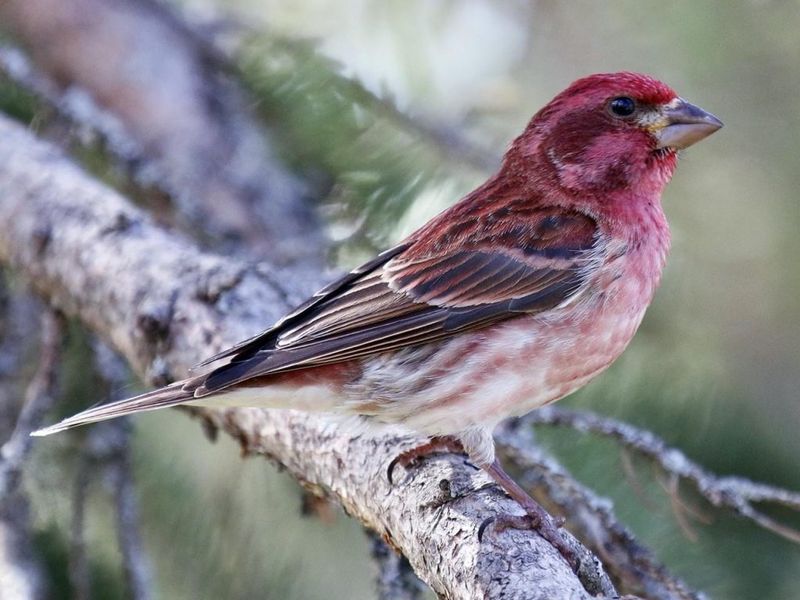
The air is alive with music when finches are near, each species composing its own symphonic masterpiece. The House Finch is known for its cheerful, warbling song, a series of short notes combined into a lively tune. This vocal prowess is often heard in urban settings, where males sing to establish territory and attract mates.
In contrast, the Purple Finch delivers a rich, melodious warble that resonates through the forested areas they inhabit. Their song is deeper and more fluid, often compared to the sound of a flowing brook. Listening to these finches sing provides an auditory delight, as each note tells a story of love, territory, and survival.
Whether you’re in the heart of a city or the calm of the woods, the songs of these birds add a layer of enchantment to the environment. So, next time you hear a finch’s song, take a moment to pause and listen, as you might just be witnessing a live performance of nature’s very own orchestra.
5. Nest Construction
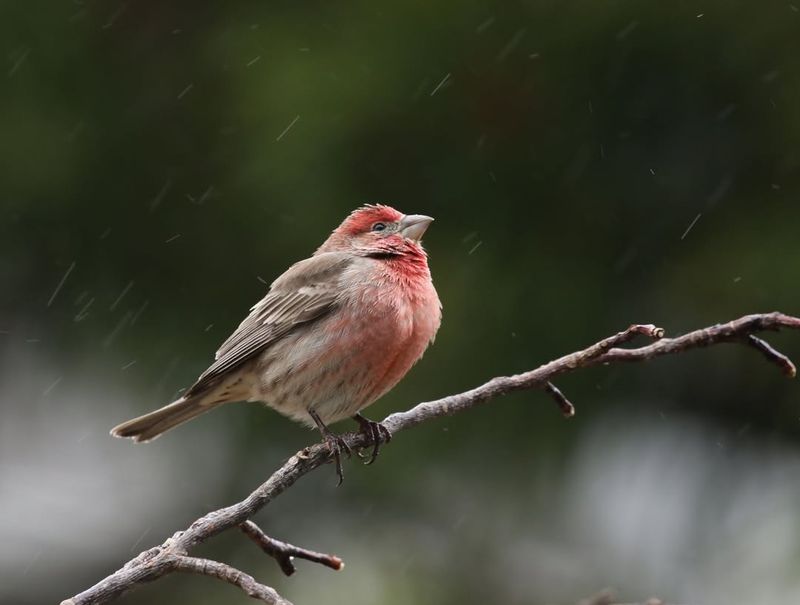
Building a home is no small feat, and finches are master architects in the avian world. House Finches are known for their adaptability, often constructing nests in man-made structures like hanging plants, eaves, and even on light fixtures.
These nests are loosely woven from twigs, leaves, and feathers, reflecting a more opportunistic approach to construction. On the flip side, Purple Finches prefer a more traditional setting, building their nests high in coniferous trees.
Their nests are sturdier, crafted from twigs, grasses, and lined with fine materials for added comfort. Observing these nests provides insight into each species’ lifestyle and adaptability.
While House Finches embrace urbanization, Purple Finches hold on to their woodland roots, showcasing the diverse strategies they’ve developed to raise their young. Whether nestled in the bustling cityscape or perched high among the pines, each nest tells a story of survival and adaptation.
So next time you spot a finch nest, take a moment to admire the craftsmanship and consider the life it supports.
6. Migration Patterns
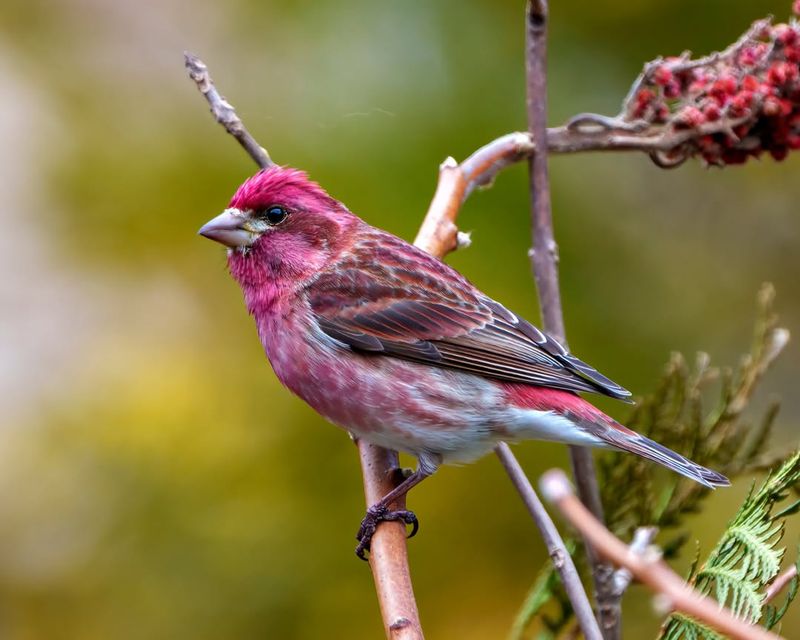
When the chill of winter sets in, finches face a critical decision: to stay or to go. House Finches, ever the urbanites, often choose to stick it out, remaining in their chosen locales year-round. Their ability to thrive in urban environments provides them with a stable food supply, making migration less necessary.
Purple Finches, however, are known for their seasonal migrations. As winter approaches, they move south from their breeding grounds in the northern forests to more temperate regions. This annual journey is a testament to their resilience and adaptability, ensuring they find the resources they need to survive.
Observing these patterns offers a glimpse into the challenges and strategies of each species. Whether hunkering down or hitting the sky, each finch’s approach to winter is a marvel of avian ingenuity. So as you watch the seasons change, consider the finches and their remarkable journeys, each one a tiny voyager navigating the vastness of the world.
7. Social Behavior
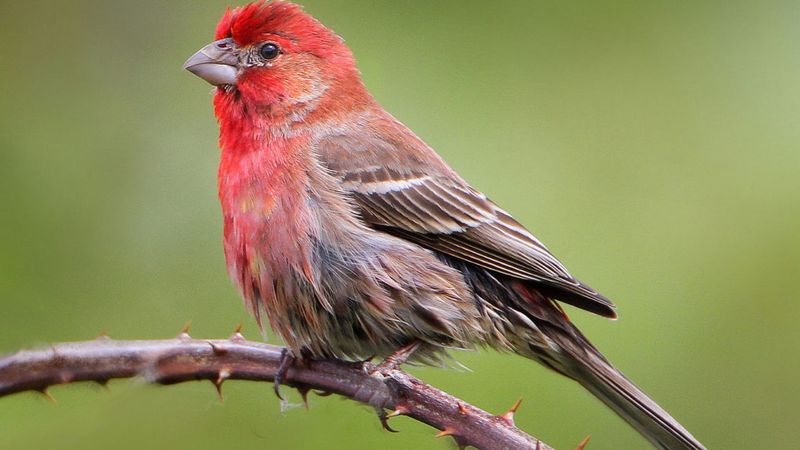
In the avian social scene, finches have distinct ways of interacting that reflect their unique lifestyles. House Finches are the social butterflies of the bird world, often seen in large flocks that gather at feeders, parks, and backyards.
Their gregarious nature makes them a delight to watch as they chatter and squabble over seeds. Purple Finches, in contrast, prefer a more reserved approach. They are often found in smaller groups or pairs, enjoying the quieter, more secluded areas of the forest.
This difference in social behavior highlights each species’ adaptability and survival strategies. For House Finches, safety and food availability in numbers are key, while Purple Finches find solace and sustenance in the tranquility of nature.
Observing these behaviors provides a window into the complex social dynamics of the avian world. So next time you fill your bird feeder, pay attention to the visitors, as their interactions offer a captivating glimpse into the lives of these feathered friends.
8. Dietary Preferences
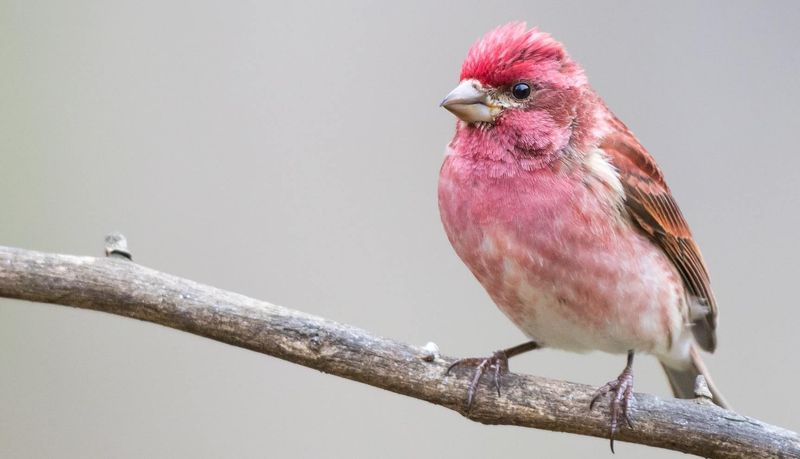
When it comes to food, finches have developed tastes that suit their lifestyles and habitats. House Finches are known for their versatility, often feeding on a wide range of seeds, fruits, and buds found in urban and suburban settings.
Their ability to adapt to different food sources is a key factor in their successful expansion across North America. Meanwhile, Purple Finches have a more specialized diet, favoring the seeds of coniferous trees. This preference ties them closely to their forest habitats, where they find an abundance of their favored treats.
Watching these birds feed is like attending a dinner party with two different themes. House Finches, with their eclectic tastes, are the adventurous eaters, while Purple Finches stick to a more traditional menu.
These dietary choices not only reflect their ecological niches but also their resilience and adaptability. So next time you’re observing finches, take note of their dining preferences and consider how these choices shape their lives and the environments they inhabit.
9. Body Size and Shape
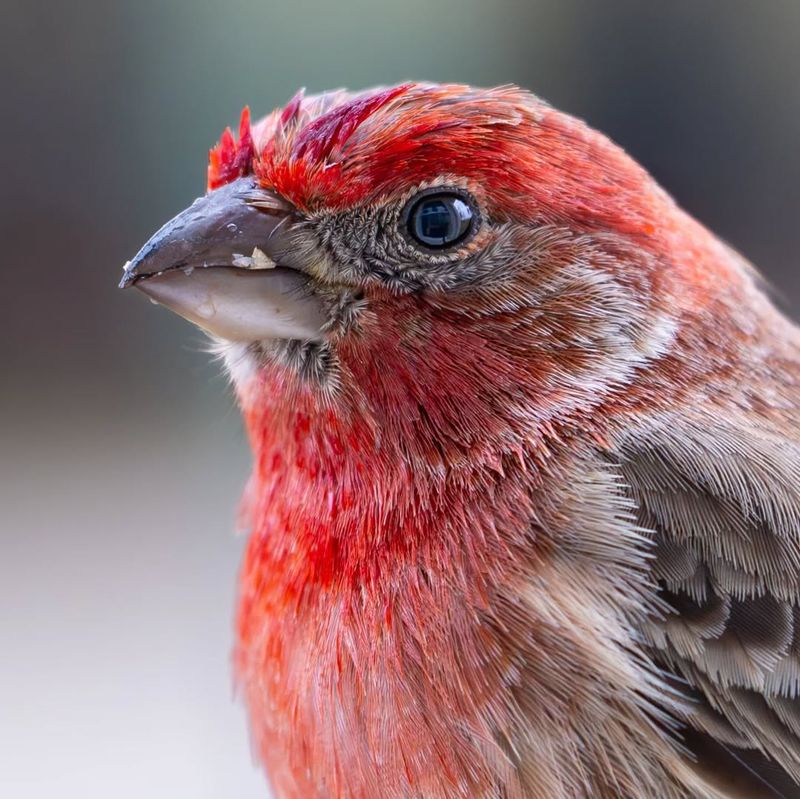
In the world of finches, size and shape are subtle cues that can aid in identification. House Finches typically present a more slender build, with long, flat heads and a fairly long tail. This sleek design aids in their agility and ability to navigate the bustling environments they often inhabit.
Purple Finches, in contrast, appear slightly more robust, with a fuller body and a more pronounced head. Their stockier build is well-suited for life in the denser, forested areas they prefer. Observing these differences can be a fun challenge for birdwatchers, adding another layer to the art of bird identification.
While size and shape might seem like minor details, they play crucial roles in each species’ survival strategies. So next time you’re out and about, keep an eye on the silhouettes of these charming birds, and see if you can spot the subtle variations that make each species unique.
10. Breeding Habits
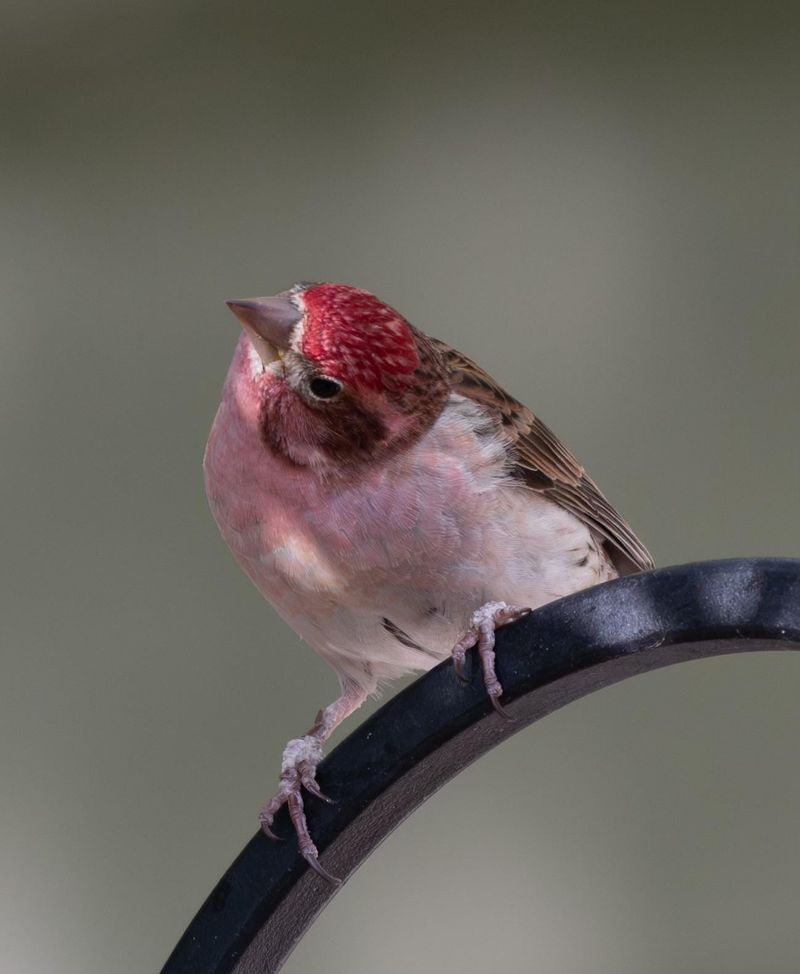
Breeding season is a busy time in the world of finches, with each species displaying unique habits and strategies. House Finches take advantage of their urban surroundings, often building nests in close proximity to human activity.
This proximity to humans offers a measure of protection from some predators, although it also presents its own set of challenges. Purple Finches, on the other hand, stick to the forested areas, where they build nests tucked away in the branches of coniferous trees.
This choice of location provides a safe and secluded environment for raising their young. The differences in breeding habits highlight each species’ adaptability and their strategies for ensuring the survival of the next generation.
Observing these behaviors offers a fascinating glimpse into the life cycle of these finches, as they balance the demands of raising young with the challenges of their environments. So next time you spot a nest, take a moment to appreciate the remarkable efforts these birds make to continue their lineage.
